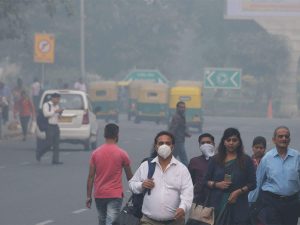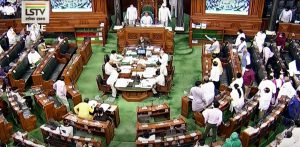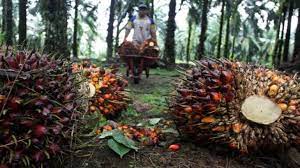Today Current Affairs: 20th August 2021 for UPSC IAS exams, State PSC exams, SSC CGL, State SSC, RRB, Railways, Banking Exam & IBPS, etc
Table of Contents
Non-Transparent Pollution Control Boards:

A new report by the Centre for Science and Environment (CSE) has revealed that most of the State Pollution Control Boards (SPCBs) and Pollution Control Committees (PCCs) in India remain non-transparent entities when it comes to sharing information with the public.
- CSE is a public interest research and advocacy NGO based in New Delhi.
- The report is titled, Transparency Index: Rating of pollution control boards on public disclosure.
- It has assessed the data disclosure performance of 29 State Pollution Control Boards And Six Pollution Control Committees from across the country.
- Of these, only 17 boards and committees scored 50% or above.
- Pollution control agencies under Air Act 1981 and Water Act 1974 is to collect and disseminate information related to air and water pollution and also about its prevention, control or abatement.
- The law also asks the boards to share the data in the public domain.
- However, this is rarely done in practice.
- The pollution control boards of Odisha and Telangana were the top performers and had scored 67% in transparency.
- Putting in the public domain crucial pollution-related information, data and details of actions taken is critical.
- It can help policy-makers take the discussions to the next level of pollution management.
- It can also reassure the people about the efficiency of these boards and committees.
New Development Bank:

During BRICS (Brazil, Russia, India, China and South Africa) meet, India proposed that NDB’s (New Development Bank) scope be expanded to strengthen Social Infrastructure besides promoting industry.
- Social Infrastructure includes the construction and maintenance of facilities that support social services such as healthcare, education, and housing.
- India is the chair of the BRICS grouping for 2021.
- It is a multilateral development bank jointly founded by the BRICS countries at the 6th BRICS Summit in Fortaleza, Brazil in 2014.
- It was formed to support infrastructure and sustainable development efforts in BRICS and other underserved, emerging economies for faster development through innovation and cutting-edge technology.
- It is headquartered at Shanghai, China.
- In 2018, the NDB received observer status in the United Nations General Assembly, establishing a firm basis for active and fruitful cooperation with the UN.
Objectives Of NDB:
- Fostering development of member countries.
- Supporting economic growth.
- Promoting competitiveness and facilitating job creation.
- Building a knowledge sharing platform among developing countries.
- To fulfill its purpose, the Bank supports public or private projects through loans, guarantees, equity participation and other financial instruments.
Tribunal Reforms Bill Of 2021:

The Supreme Court of India (SC) has challenged the government to produce material showing its reasons for introducing the Tribunal Reforms Bill of 2021.
- The Bill replaces the Tribunals Reforms (Rationalisation and Conditions of Service) Ordinance, 2021 which was quashed by the Supreme Court.
Issues Raised by SC:
- Unconstitutional Legislative Overriding: There was lack of discussion over the bill, and the government has re-enacted the very same provisions struck down by the Court in the Madras Bar Association case (2021).
- It amounts to “unconstitutional legislative overriding” of the judgement passed by the SC.
- Repeated Violation of SC Orders: The Centre is not following the repeated directions issued by the Court to ensure the proper functioning of the Tribunals.
- The provisions in the ordinance regarding conditions of service and tenure of Tribunal Members and Chairpersons were struck down by the Supreme Court.
- Security of Tenure: The Tribunals Reforms Act, 2021 bars appointments to tribunals of persons below 50 years of age. It undermines the length/security of tenure.
- Undermines the Separation of Powers: The bill allows the Central Government to take a decision on the recommendations made by the selection Committee, preferably within three months from the date of such recommendation.
- Section 3(7) of the bill mandates the recommendation of a panel of two names by the search-cum selection committee to the Central Government, violating the principles of separation of powers and judicial independence.
- Vacant Positions in Tribunals: India now has 16 tribunals including the National Green Tribunal, the Armed Forces Appellate Tribunal, the Debt Recovery Tribunal among others which also suffer from crippling vacancies.
- Existence of large number of vacancies of Members and Chairpersons and the inordinate delay caused in filling them up has resulted in weakening of the tribunals.
- Detrimental to the Decision-making Process: These cases will be transferred to High Courts or commercial civil courts immediately.
- The lack of specialisation in regular courts could be detrimental to the decision-making process.
- Further, the dissolution of certain tribunals and appellate bodies, and the transfer of their functions to High Courts can be criticized on the grounds that Indian courts are already overburdened with their existing caseload.
About the Tribunals Reforms Bill, 2021:
- The Bill seeks to dissolve certain appellate bodies and transfer their functions to other existing judicial bodies. For example, the disputes heard by the Film Certification Appellate Tribunal will be addressed by the High Court.
- The Finance Act, 2017 merged tribunals based on domain. For example, the Competition Appellate Tribunal has been merged with the National Company Law Appellate Tribunal.
- The Chairperson and Members of the Tribunals will be appointed by the central government on the recommendation of a Search-cum-Selection Committee. The Committee will consist of:
- The Chief Justice of India, or a Supreme Court Judge nominated by him, as the Chairperson (with casting vote).
- Two Secretaries nominated by the central governments.
- The sitting or outgoing Chairperson, or a retired Supreme Court Judge, or a retired Chief Justice of a High Court, and
- The Secretary of the Ministry under which the Tribunal is constituted (with no voting right).
- It will have separate search-cum-selection committees with the Chief Justice of the High Court of the concerned state, as the Chairman (with a casting vote).
- The Bill provides for a four-year term of office (subject to the upper age limit of 70 years for the Chairperson, and 67 years for members).
- Removal of Tribunal Members: It states that the central government shall, on the recommendation of the Search-cum-Selection Committee, remove from office any Chairperson or a Member.
UN Peacekeepers:

External Affairs Minister, S. Jaishankar has announced the rollout of a technological platform in partnership with the UN — ‘UNITE Aware’ — to help enhance the safety of UN peacekeepers. The platform has been used in four UN missions.
- This was announced during the recent United Nations Security Council (UNSC) open debate on technology and peacekeeping.
- The minister has also outlined a four-point framework for securing the peacekeepers:
- Need for the deployment of proven, cost-effective and field-serviceable technologies that were environmentally friendly in their construction.
- Peacekeepers needed sound information and intelligence.
- Need for precise positioning and overhead visualisation.
- Investment in capacity building and training of peacekeepers with regard to technology.
- A Memorandum of Understanding has been announced between India and the UN in support of the “Partnership for Technology in Peacekeeping” initiative and the UN C4ISR Academy for Peace Operations (UNCAP).
UNITE AWARE:
- UNITE AWARE is a mobile tech platform developed by India to provide terrain-related information to the UN peacekeepers so as to ensure their safety.
- It is being developed in partnership with the UN Department of Peacekeeping Operations and the Department of Operational Support. India has spent 1.64 million USD for this project.
United Nations Peacekeeping is a joint effort between the Department of Peace Operations and the Department of Operational Support.
Every peacekeeping mission is authorized by the Security Council.
- UN peacekeepers (often referred to as Blue Berets or Blue Helmets because of their light blue berets or helmets) can include soldiers, police officers, and civilian personnel.
- Peacekeeping forces are contributed by member states on a voluntary basis.
- Civilian staff of peace operations are international civil servants, recruited and deployed by the UN Secretariat.
Gujarat Anti-Conversion Law:

Gujarat Government has defended its new anti-conversion law in High Court saying marriages cannot be tool for “forceful conversion”.
- The HC is hearing two petitions that have challenged the newly enacted amendment in the law, which deals with forcible religious conversion through marriages.
- During the hearing, the Court observed that the amended law keeps a sword hanging over interfaith couples because it has created an impression that interfaith marriages are not permissible in the State.
Gujarat Freedom of Religion (Amendment) Act, 2021:
- It proposes punishment of 3-10 years in jail for forcible or fraudulent religious conversions through marriage.
- It amends the Gujarat Freedom of Religion Act, 2003.
- The amendment aims to reduce the “emerging trend” where women are “lured to marriage” for the purposes of religious conversion.
- The amended law has vague terms which are against basic principles of marriage and right to propagate, profess and practice religion as enshrined in the Article 25 of the Constitution.
- The law even allows distant family members to file a criminal complaint.
Supreme Court Collegium:

The Supreme Court Collegium has recommended to the government nine names for appointment as judges in the court, and in the process, scripted history by naming Karnataka High Court judge B.V. Nagarathna, who may become India’s first woman CJI a few years from now.
Key Recommendations:
- The Collegium has for the first time, in one single resolution, recommended three women judges. It has thus sent a strong signal in favour of the representation of women in the highest judiciary.
- It has also continued the recent trend of recommending direct appointments from the Supreme Court Bar to the Bench of the court.
- It has also recommended six judicial officers and a judicial member of the Income Tax Appellate Tribunal for appointment as judges of the Telangana High Court.
- In exercise of the powers conferred by clause (2) of Article 124 of the Constitution of India, the appointments are made by the President of India.
- The names are recommended by the Collegium.
- To become a judge of the Supreme court, an individual should be an Indian citizen.
- In terms of age, a person should not exceed 65 years of age.
- The person should serve as a judge of one high court or more (continuously), for at least five years or the person should be an advocate in the High court for at least 10 years or a distinguished jurist.
- The collegium sends its final recommendation to the President of India for approval.
- The President can either accept it or reject it.
- In the case it is rejected, the recommendation comes back to the collegium.
- If the collegium reiterates its recommendation to the President, then he/she is bound by that recommendation.
Kigali Amendment To The Montreal Protocol:

The Union Cabinet has approved ratification of the Kigali Amendment to the Montreal Protocol on Substances that Deplete the Ozone Layer for phase down of Hydroflurocarbons (HFCs) by India, adopted by the Parties to the Montreal Protocol on October, 2016 at 28th Meeting of the Parties to the Montreal Protocol held at Kigali, Rwanda.
- National strategy for phase down of Hydrofluorocarbons as per the applicable phase down schedule for India will be developed after required consultation with all the industry stakeholders by 2023.
- Amendments to the existing legislation framework, the Ozone Depleting Substances (Regulation and Control) Rules to allow appropriate control of the production and consumption of Hydrofluorocarbons to ensure compliance with the Kigali Amendment will be done by mid-2024.
- India will complete its phase down of HFCs in 4 steps from 2032 onwards with cumulative reduction of 10% in 2032, 20% in 2037, 30% in 2042 and 80% in 2047.
- The Montreal Protocol on Substances that Deplete the Ozone Layer, is an international environmental treaty for protection of the Ozone Layer by phasing out the production and consumption of man-made chemicals referred to as ozone depleting substances (ODS).
- Under the Kigali Amendment; Parties to the Montreal Protocol will phase down production and consumption of Hydrofluorocarbons, commonly known as HFCs.
- Hydrofluorocarbons were introduced as non-ozone depleting alternative to Hydrofluorocarbons (HFCs). While HFCs do not deplete the stratospheric ozone layer, they have high global warming potential ranging from 12 to 14,000, which have adverse impact on climate.
- Recognizing the growth in use of HFCs, especially in Refrigeration and Air-conditioning sector the Parties to the Montreal Protocol, reached agreement at their 28th Meeting of the Parties (MOP) held in October 2016 in Kigali, Rwanda to add HFCs to the list of controlled substances and approved a timeline for their gradual reduction by 80-85 per cent by the late 2040s.
Mission On Palm Oil:

The Union Cabinet has given its approval to launch a new Mission on Oil palm to be known as the National Mission on Edible Oils – Oil Palm (NMEO-OP) as a new Centrally Sponsored Scheme with a special focus on the North east region and the Andaman and Nicobar Islands.
- A financial outlay of Rs.11,040 crore has been made for the scheme, out of which Rs.8,844 crore is the Government of India share and Rs.2,196 crore is State share and this includes the viability gap funding also.
- Under this scheme, it is proposed to cover an additional area of 6.5 lakh hectare (ha.) for oil palm till the year 2025-26 and thereby reaching the target of 10 lakh hectares ultimately.
- The production of Crude Palm Oil (CPO) is expected to go upto 11.20 lakh tonnes by 2025-26 and upto 28 lakh tonnes by 2029-30.
- There are two major focus areas of the Scheme. For the first time, the Government of India will give a price assurance to the oil palm farmers for the Fresh Fruit Bunches (FFBs). This will be known as the Viability Price (VP).
- The second major focus of the scheme is to substantially increase the assistance of inputs/interventions.
- A substantial increase has been made for planting material for oil palm and this has increased from Rs 12,000 per ha to 29000 per ha.
Breakthrough In Nuclear Fusion Research:

The Lawrence Livermore National Laboratory in California announced that an experiment carried out in its National Ignition Facility has made a breakthrough in nuclear fusion research.
- In the experiment, lasers were used to heat a small target or fuel pellets. These pellets containing deuterium and tritium fused and produced more energy.
- The team noted that they were able to achieve a yield of more than 1.3 megajoules.
- The megajoule of energy released in the experiment is indeed impressive in fusion terms, but in practice, this is equivalent to the energy required to boil a kettle.”
- Nuclear fusion is defined as the combining of several small nuclei into one large nucleus with the subsequent release of huge amounts of energy.
- Nuclear fusion powers our sun and harnessing this fusion energy could provide an unlimited amount of renewable energy.
- Nuclear fusion energy is a good choice as the baseload energy in the future with many advantages, such as inexhaustibility of resources, inherent safety, no long-lived radioactive wastes, and almost no CO2 emissions.
Nuclear fusion is a reaction in which two or more atomic nuclei are combined to form one or more different atomic nuclei and subatomic particles. The difference in mass between the reactants and products is manifested as either the release or the absorption of energy.




